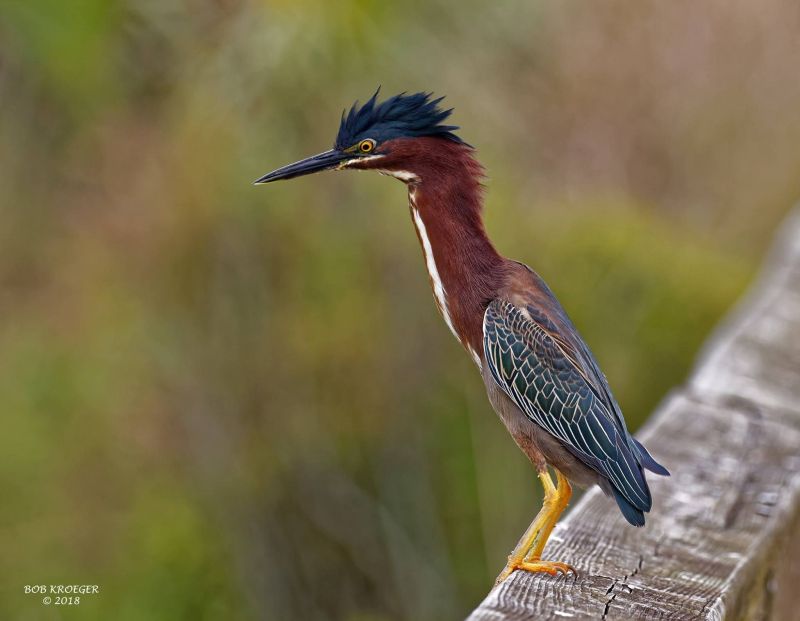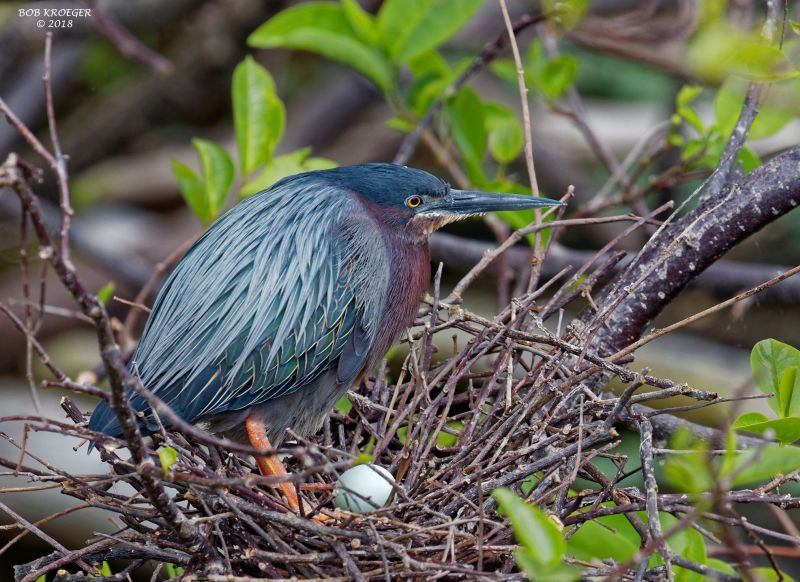
Why does this bird have his crest raised?
Perhaps someone came too close to his nest.
Green herons (Butorides virescens) are shy waders in swampy thickets, preferring to fish in the shadows and nest alone. Because of their secretive nature it’s always surprising to find a nest.
When green herons return to Pennsylvania in the spring they’re already paired up for nesting. The male chooses the location, usually in a small tree over water, giving preference to last year’s site if it was successful. He starts to build the nest but as soon as his lady gets the hint his job is to bring the sticks as she places them. Then she lays 4-5 eggs.

With this dual building effort it’s amazing that the structure is sometimes so thin that you can see the eggs through it from below.
That is, if you can find the nest. Green herons don’t want you to. They fly away loudly if you come too close. Typically they sound like this (Xeno Canto 147343 by Paul Marvin at Viera Wetlands, FL)
… but if they’re really annoyed they are much louder (Xeno Canto 145806 by Paul Marvin at Viera Wetlands, FL)
Right now most of Pennsylvania’s green herons have young in the nest and the parents are busy bringing food. At 16-17 days old the chicks will climb out of the nest — or swim if they have to. They’ll fly at 21-22 days old.
Stay alert for the sight and sound green herons. You might find a nest over water.
Bob Kroeger found these herons in Florida.
(photos by Bob Kroeger of South Dennis, MA. Bob photographs birds for fun and shares them on Facebook. Here’s his business website.)